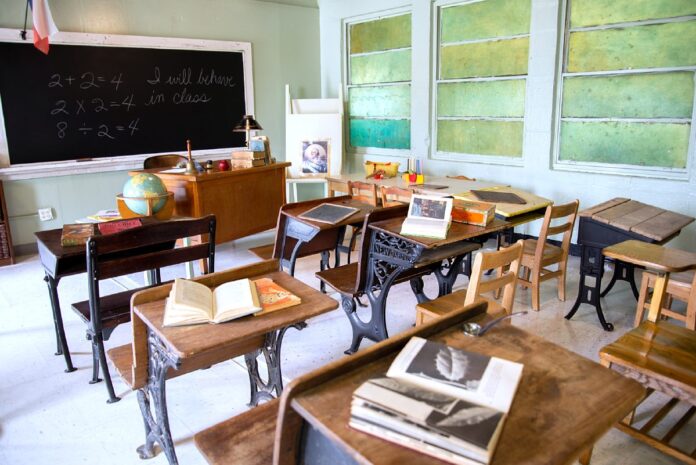HARLINGEN — The lessons he learned in a wooden one-room schoolhouse helped Lonnie Davis teach his grandmother how to read and write.
During segregation, the old school helped give the area’s African-American children an education until Fannie Callandret donated land on which the San Benito school district built a brick two-room school on the edge of the El Jardin barrio.
This week, the San Benito Historical Society plans to open the Callandret Black History Museum in the old two-room schoolhouse to honor landowners Joe and Fannie Callandret for their long-forgotten gift to cap off February’s Black History Month.
“It was a fight to get his name on that school,” Linda Brock, 68, the Callandrets’ granddaughter, said. “I didn’t give up on it. I’m so proud and grateful. Everything that’s been done to preserve it makes me feel better. I wish my mother and grandmother could have seen this.”
Old wooden schoolhouse
Next to what was once the Callandrets’ land, the old wooden schoolhouse still stands.
“I was born right around the corner where the school is now,” Davis, 76, a Harlingen businessman, said.
In 1947, Davis was a student in the wooden schoolhouse, which included two out-houses — one for boys and one for girls.
“We had quite a large class of kids,” he said as he recalled his old school. “It was great.”
Davis still remembers Myrtle Fay Jackson, his African-American teacher whom the San Benito school district paid $100 a month — while white teachers earned $300.
“She taught us how to read and write and do arithmetic — and we were good,” he said. “It was the best foundation I could ever receive because all the black teachers went through the same struggle as we did so they wanted to pass down the legacy.”
Then one day, his grandmother Mary Davis asked him for a favor.
“My grandmother asked me, ‘Do you know what it’s like to live in a world where you can’t recognize your own name?’” Davis said. “Can you teach me how to write my name?”
So Davis became her teacher.
“We’d go to downtown San Benito to pay the light bill and one of her deals was, ‘Do you want me to sign?’” Davis said as he recalled her question to the clerk. “She wanted to show people she knew how to write. She knew how to read also. I taught her how to read.”
Two-room brick schoolhouse
In 1948, Fannie Callandret donated the land on which the San Benito school district built the brick two-room schoolhouse named after her husband, a farmer and businessman from Louisiana who died in 1931.
“In 1950, the school district called a meeting of the school board ‘for the purpose of drawing plans and specifications and calling for bids for the construction of a new Negro school,’” Sandra Tumberlinson, the Historical Society’s co-founder, wrote in a press release.
Museum
On Saturday, the historical society plans to open the Callandret Black History Museum, the first museum honoring African-American history south of Houston.
“I realized how important it is to remind people the Callandrets were here and to remind people the difference they made in the community,” Tumberlinson said. “It’s important to point to the fact we had the first ‘colored’ school in the Valley. This is meant to help educate younger people about segregation so that things like that never happen again.”
Tumberlinson said an original photograph depicting the old wooden schoolhouse’s classroom served as the museum’s blueprint.
“We tried to recreate that schoolhouse,” she said of the old school at the intersection of Commerce and Doherty streets.
Inside the museum, members of the Historical Society will feature a recreation of the old wooden schoolhouse’s classroom, artifacts and original photographs, a history of the area’s original African-American community along with the histories of the Callandret, Davis and Lasley families, Tumberlinson said.
On Saturday, the ceremony will feature a walking tour of the neighborhood in which the city’s African-American families lived along with a tour of the Harlingen City Cemetery, which includes a section in which many of San Benito’s first black residents are buried.
Background
About two years ago, San Benito schools Superintendent Nate Carman asked the Historical Society’s members if they wanted to lease the building, which had served as the district’s alternative school — the Joe Callandret Positive Redirection Center — since 2000.
Now, the school district is leasing the building to the Historical Society for $1 a year.
Joe Callandret’s grave
In Harlingen’s City Cemetery, the inscription carved into Joe Callandret’s grave reads, “An old-fashioned Negro, erected by his friends of the Caucasian race.”
“It’s historical,” Brock, the Callandrets’ granddaughter, a former nurse, said of the old brick schoolhouse standing across the street from her home. “People today don’t know there was a black school in San Benito. Too many things have been left out. They should be proud they got the first black school here in San Benito.”




